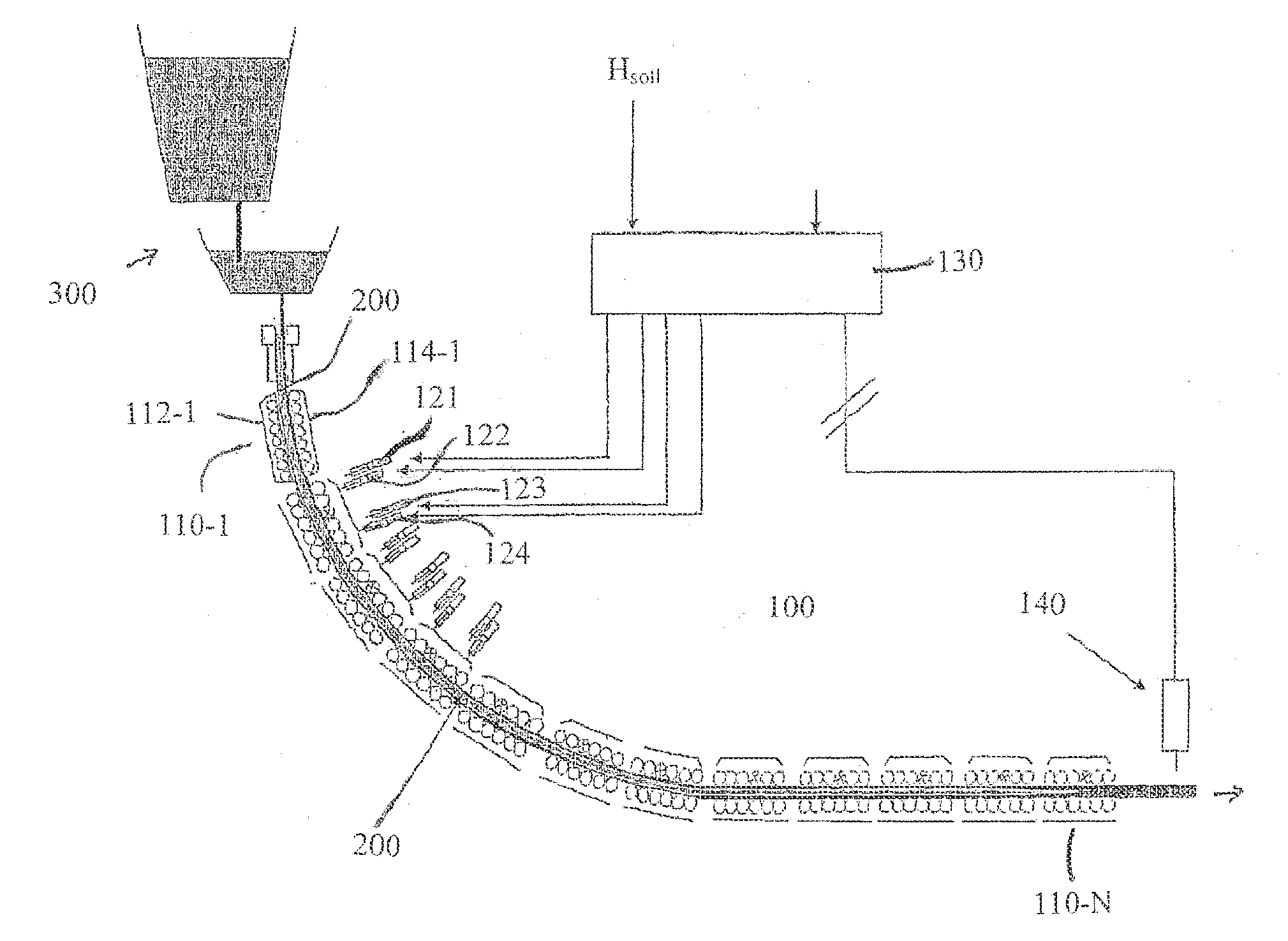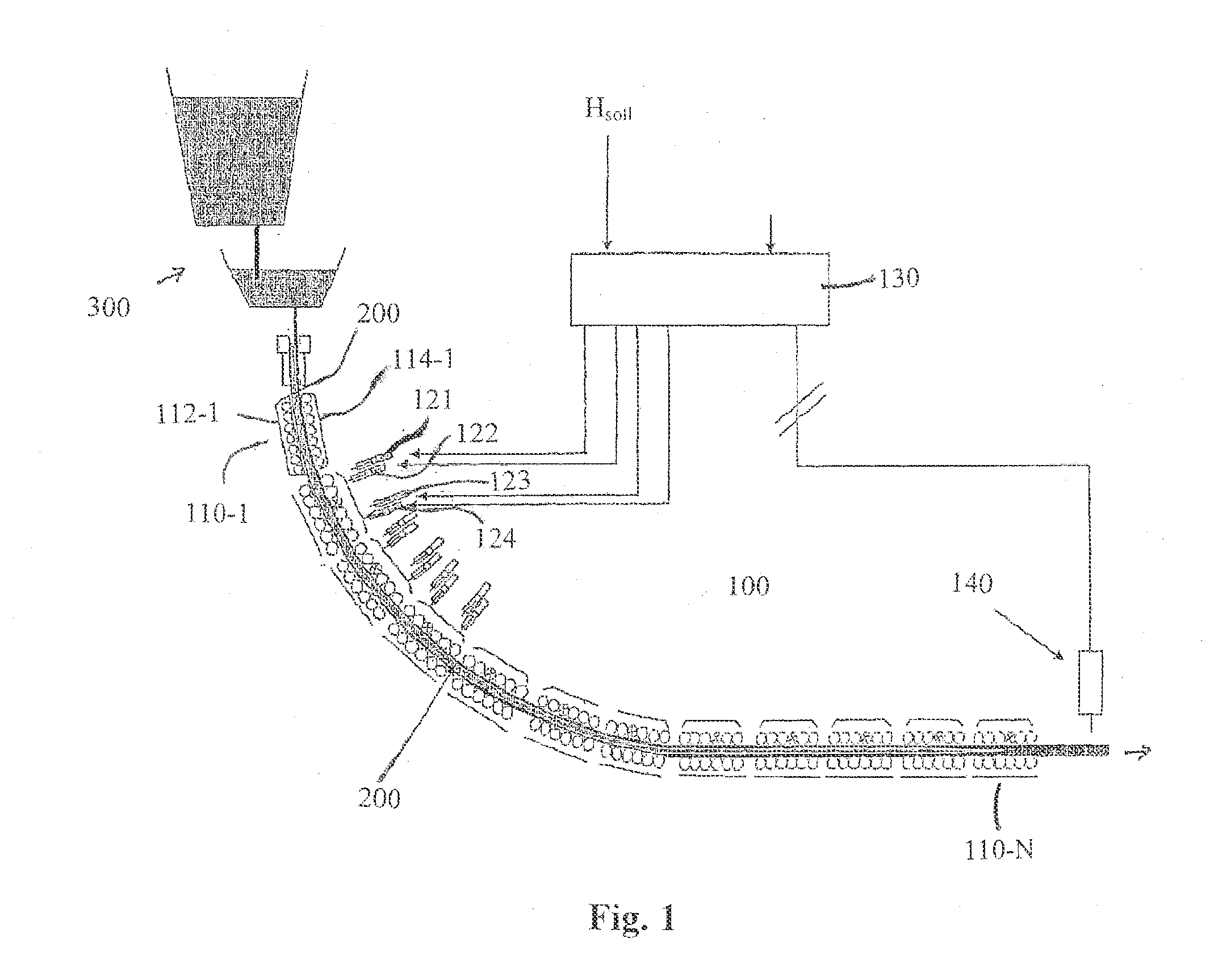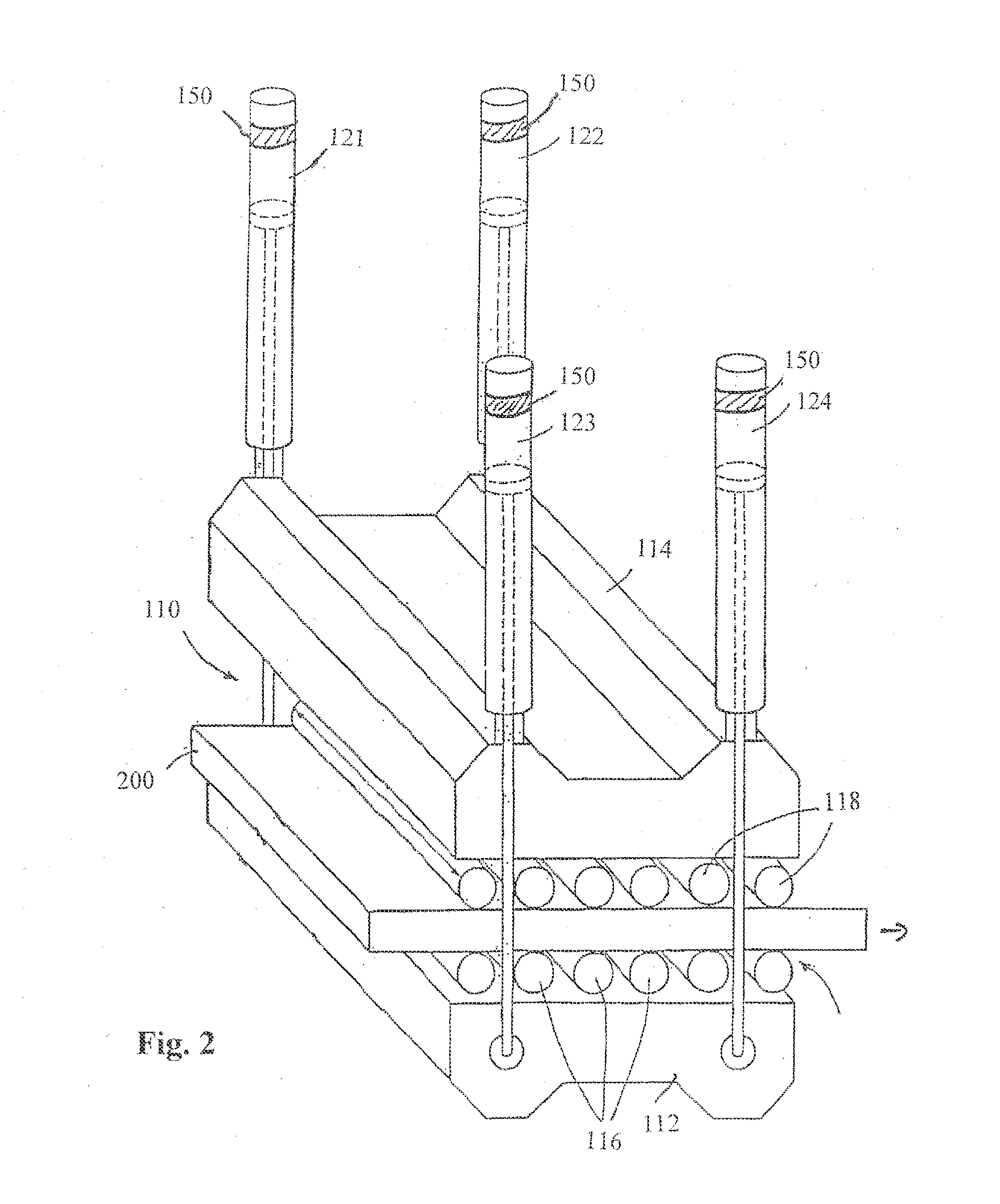Method and device for positioning at least one roll segment of a strand guiding unit against a strand
a technology of guiding unit and guiding unit, which is applied in the direction of casting parameters measurement/indication device, manufacturing tools,foundry moulding apparatus, etc., can solve the problem of unfavorable uneven wear of rolls, and achieve the effect of improving the quality of strands
- Summary
- Abstract
- Description
- Claims
- Application Information
AI Technical Summary
Benefits of technology
Problems solved by technology
Method used
Image
Examples
Embodiment Construction
[0023]FIG. 1 shows the strand guide of the invention for guiding a strand 200 after the strand has left a casting installation 300. The strand guide comprises a plurality of roll segments 110-n, where n=1−N. Each roll segment 110-n has an upper and a lower roll support 112, 114. Each roll support serves to support at least one roll for guiding the strand between the rolls after it leaves the casting installation. At least one roll segment (three roll segments in FIG. 1) has several adjusting elements 121-124 for adjusting the upper and lower roll supports 112, 114 relative to each other (see FIG. 2 also). Furthermore, the strand guide 100 includes a unit 130 for controlling the individual adjusting elements of the roll supports in such a way that the right and left lateral edges of the strand 200 become equally high.
[0024]The unit 130 can be designed either as an open-loop control unit or a closed-loop control unit. If it is designed solely as an open-loop control unit, then it pres...
PUM
| Property | Measurement | Unit |
|---|---|---|
| heights | aaaaa | aaaaa |
| height | aaaaa | aaaaa |
| pressure | aaaaa | aaaaa |
Abstract
Description
Claims
Application Information
 Login to View More
Login to View More - R&D
- Intellectual Property
- Life Sciences
- Materials
- Tech Scout
- Unparalleled Data Quality
- Higher Quality Content
- 60% Fewer Hallucinations
Browse by: Latest US Patents, China's latest patents, Technical Efficacy Thesaurus, Application Domain, Technology Topic, Popular Technical Reports.
© 2025 PatSnap. All rights reserved.Legal|Privacy policy|Modern Slavery Act Transparency Statement|Sitemap|About US| Contact US: help@patsnap.com



